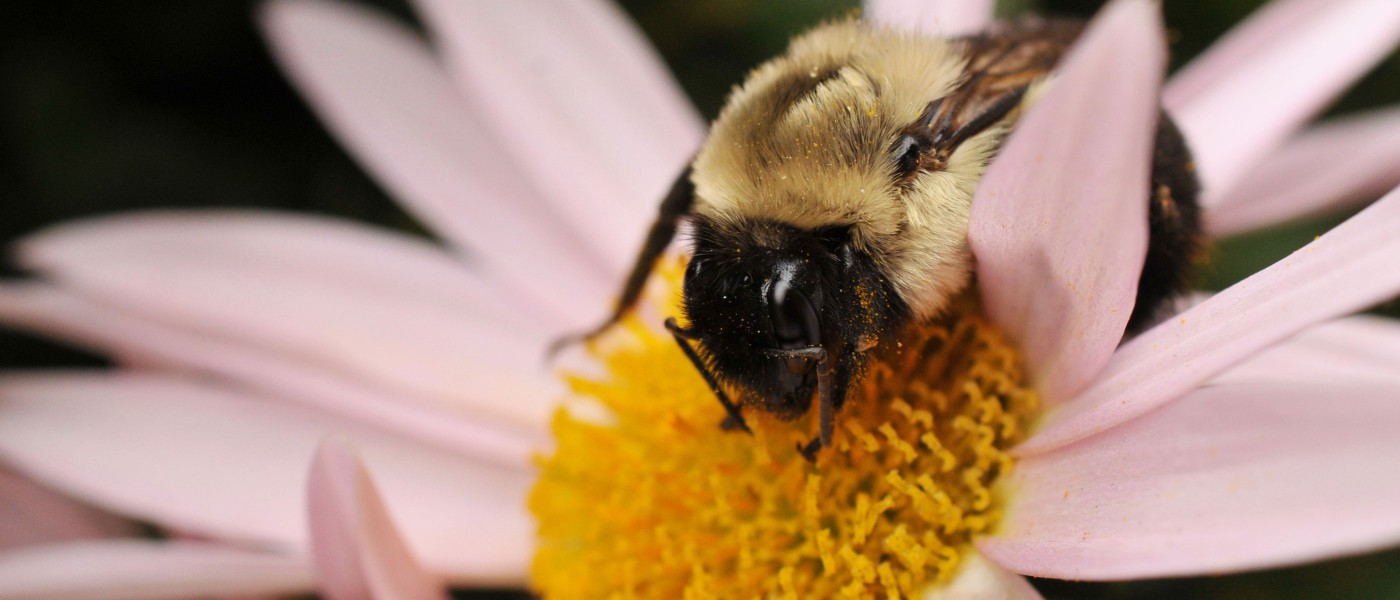All About Bugs: Bees, Bee-Mimics, and Pollinators of All Kinds
Honey bees and bumble bees are what most of us think of when we picture pollinators, but many other insects contribute to the dispersal of pollen. On one summer day, a single plant can attract paper wasps, mud daubers, hornets, horntails, flower flies, green bottle flies, and dozens of other species.
Swarms of these insects can be seen at BBG starting in spring and continuing on through early fall. Though not all plants actually need to be pollinated by insects—some are anemophilous, which means they only need the wind to disperse their pollen—many popular garden plants are entomophilous, which means they require the help of insects. Their brightly colored and strongly scented flowers have evolved to attract them.
So if you look closely at the flowers in bloom now, you’ll likely see all sorts of insects stopping by to feed on pollen or nectar, inadvertently fertilizing the surrounding plants when they move from flower to flower, or plant to plant. Below are some common ones I’ve photographed here at the Garden over the past several years. Once you learn to identify a few, you’ll start to notice them everywhere.
A syrphid fly (Toxomerus species, above), sometimes called a flower fly or hover fly, visits a species rose in the Shakespeare Garden in May. Many syrphid flies have evolved to resemble bees. The striking coloration, called aposematism, is thought to ward off predators. These flies are easy to distinguish from bees, since they only have one pair of wings.
A bald-faced hornet (Dolichovespula maculata) was attracted to these fennel flowers along the Rose Arc Pool. This species is a type of yellow jacket, though it is actually black and ivory, not black and yellow. It makes paper nests (sometimes seen in trees around the Garden) and lives in colonies. Adults are omnivorous, but the larvae are fed nectar and fruit pulp, collected by workers.
Above you can see the yellow basket of pollen, called a corbicula, on the leg of a European honey bee (Apis mellifera) when it stopped at a pussy willow in March. Many bees are equipped with these pollen baskets on their hind legs, which allow them to gather a load of pollen while they feed on nectar. They’ll bring this packet of pollen, a rich source of proteins and fatty acids, back home to feed to their larvae.
Bumble bees (Bombus impatiens) are a common sight from late spring through fall, but they get easier to photograph as the weather cools. This one was nearly motionless on a cold day in late October on Lily Pool Terrace. Like most other native bees, bumble bees live alone and have relatively small stingers, which they only need to defend themselves, rather than a queen or colony. Look for them now on sunflowers in the Herb Garden and on wild bergamot and mountain mint in the Native Flora Garden.
Butterfly milkweed doesn’t just attract butterflies. Here you see a leafcutter bee (Megachile species), another solitary species, enjoying its nectar in the Native Flora Garden. This bee has a dark body and collects pollen on the underside of its abdomen, rather than on its legs. You’ll see the circular holes it cuts from the edges of leaves to use in building its nest.


